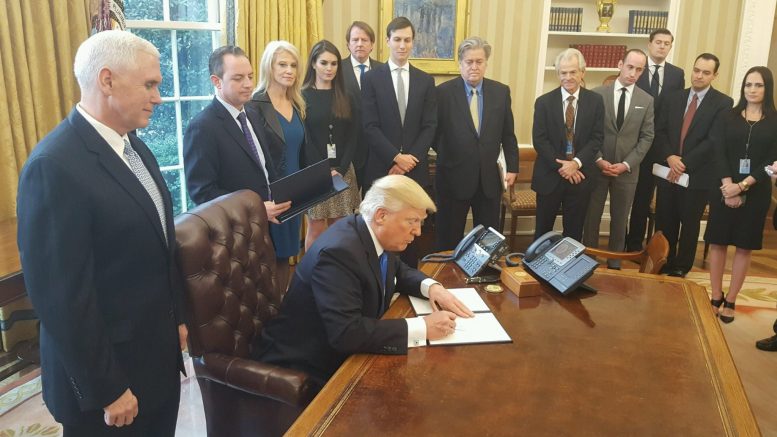Let’s face it, at times like these, editorial writers are spoiled for choice. How does one choose among the most pertinent topics of the day? The surge in new coronavirus cases in the U.S.? Last week Florida, Texas, Oklahoma, and South Carolina all reported their highest-ever single-day totals of new cases. Yesterday Johns Hopkins University recorded nearly 39,000 new cases in the United States.
Or how about the release last week of John Bolton’s new book, The Room Where it Happened, a memoir by U.S. President Donald Trump’s former national security adviser about his 453 days in the administration, and in which he describes the president as misinformed and incompetent and obsessed with his own reelection? “I am hard-pressed to identify any significant Trump decision during my tenure that wasn’t driven by re-election calculations,” wrote Bolton, who was fired in September 2019.
That may explain Trump’s reckless decision to hold a campaign rally on June 20 at an enclosed arena in Tulsa, Oklahoma (where wearing masks wasn’t mandatory). Or Mike Pence’s defence of that decision. “The freedom of speech, the right to peaceably assemble, is enshrined in the constitution of the U.S., and we have an election coming up,” said the Vice President, who also happens to chair the White House Coronavirus Task Force. This is the same individual, who at a press briefing of that task force on June 26 – the first held in almost two months – admitted that, “we now have seen cases rise precipitously across the South.”
Pence also wrote an Op-Ed in the Wall Street Journal on June 16 accusing the media of “sounding the alarm bells over a ‘second wave’ of coronavirus infections” and that “such panic is overblown.” Pence pointed out that it was “thanks to the leadership of President Trump and the courage and compassion of the American people, our public health system is far stronger than it was four months ago, and we are winning the fight against the invisible enemy.”
I could also write about Trump’s niece Mary Trump, a clinical psychologist in New York, who plans to publish her own tell-all account of her uncle. Last week, a court in New York City rejected a petition by the Trump family to block the book, Too Much and Never Enough: How My Family Created the World’s Most Dangerous Man, which is being published by Simon & Schuster.
But ridiculing Trump and his coterie of yes men – as warranted as that is at the moment – is like shooting fish in a barrel. It’s just too easy. And there’s hope on the horizon anyway: With Trump’s approval ratings plunging he is going down in November. Praise Be.
An entire editorial could be written about the stock market dip last week, or safe-haven gold, or the International Monetary Fund’s grim warning on June 24 that the global economy will contract 4.9% in 2020, up from its earlier estimate of 3% in April.
Instead, I’ll write about a very interesting report that crossed my desk last week from Haywood Securities’ Kerry Smith, in which the mining analyst draws up a list of companies that he thinks could be prime acquisition targets for Chinese mining companies.
Smith notes that Chinese firms have acquired 14 mining companies since 2017, including four so far this year. And with higher gold prices (up 16% since the start of 2020), he says, not only might the pace of M&A accelerate, but “the universe of potential Chinese buyers” might expand as well.
“With conviction in a much higher gold price and access to significant capital, these Chinese buyers are likely to remain very active in M&A,” Smith opined, “and the only real impediment to many deals is management’s willingness to sell.”
“Those producers trading at a significant discount to their net asset value are the more likely targets; however, the Chinese will pay 1 x NAV as seen with the Continental Gold and Guyana Gold acquisitions, where they paid close to NAV at lower gold prices.”
Smith lists 12 producers outside of North America and Australia “that trade at discounted valuations” and “could be acquisition targets for these well-funded and aggressive Chinese producers.” They are: Calibre Mining, Galiano Gold, Golden Star Resources, Jaguar Mining, K92 Mining, Lundin Gold, New Gold, OceanaGold, Perseus Mining, Roxgold, Torex Gold Resources and West African Resources.
“China has significant political power in many underdeveloped countries, and this political power is a significant advantage to Chinese mining companies who purchase undervalued international assets,” Smith concluded.
“Shandong and Zijin are not the only Chinese buyers either, but they are by far the most active to date.”
Those other companies that have acquired assets since 2017 include China Molybdenum, Chengton, China National Uranium Corp., Chifeng Jilong, Jinchuan and Shandong Tianye.
Declared Smith: “Stay tuned as we expect these could be exciting times for the gold industry.”
Hallelujah.


Be the first to comment on "Editorial: This and That"